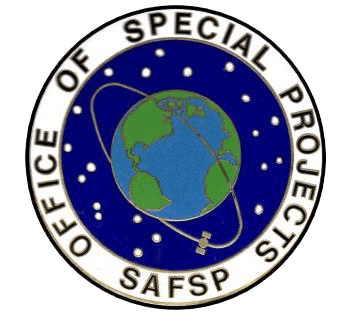Virtual Museum
Welcome to a Virtual Museum that tells the incredible story of US ingenuity in secretly developing the world’s finest satellites for defeating the Soviets in the Cold War.
The end of World War II marked the beginning of the Cold War between the United States and the Soviet Union. As the military strength of both countries grew, it became increasingly difficult to know the extent to which the Soviet Union could deploy forces against the United States and our allies. In particular, President Eisenhower needed to know more about the state of Soviet weapons development, how they would deploy weapons that could be used against us, their industrial strength for supporting military might, and other strategic indicators such as agricultural resources.
In the early 1960s, the Department of Defense created two new organizations – both in secret – to respond to the Soviet threat. In 1960, within the Department of the Air Force, the Secretary of the Air Force created the clandestine Office of Special Projects, referred to as SAFSP or SP. A year later, the Department of Defense (DoD) formed another clandestine office, the National Reconnaissance Office (NRO), an umbrella organization of men and women from the Air Force, the CIA and the Navy to coordinate strategic intelligence across the Department of Defense. These organizations spied on the Russians and other adversaries through the Cold War (1960-1990).
This Virtual Museum recognizes then-secret accomplishments of the Air Force organization, SAFSP, and SP teams, companies that developed the satellites, ground antennas, communication systems and recovery aircraft; all did not exist before. While some of these programs are still classified, three of the imagery satellites, CORONA, GAMBIT and HEXAGON, and a few of the electronic signals collection satellites have been revealed since 2011.
SP’s many accomplishments can best be appreciated by understanding the national threat faced by the United States back in those days, and the incredible technology employed to meet it. The satellites on display at the National Museum of the Air Force in Dayton, Ohio, stand in grateful recognition of the men and women who selflessly fought the Cold War, in silence – from above. As you tour this Virtual Museum, you will see some of the now-unclassified YouTube highlights of SP’s challenges and accomplishments.
OVERVIEW
Welcome to a Virtual Museum that tells the incredible story of US ingenuity in secretly developing the world’s finest satellites for beating the Russians in the Cold War.
The end of World War II marked the beginning of the Cold War between the United States and the Soviet Union. As the military strength of both countries grew, it became increasingly difficult to know the extent to which the Soviet Union could deploy forces against the United States and our allies. In particular, President Eisenhower needed to know more about the state of Soviet weapons development, how they would deploy weapons that could be used against us, their industrial strength for supporting military might, and other strategic indicators such as agricultural resources.
In the early 1960s, the Department of Defense created two new organizations – both in secret – to respond to the Soviet threat. In 1960, within the Department of the Air Force, the Secretary of the Air Force created the clandestine Office of Special Projects, referred to as SAFSP or SP. A year later, the Department of Defense (DoD) formed another clandestine office, the National Reconnaissance Office (NRO), an umbrella organization of men and women from the Air Force, the CIA and the Navy to coordinate strategic intelligence across the Department of Defense. These organizations spied on the Russians and other adversaries through the Cold War (1960-1990).
This Virtual Museum recognizes the accomplishments of the Air Force organization, SAFSP. Industry and SP teams secretly developed rockets, satellites, ground antennas, communication systems and recovery aircraft that had never existed before. While some of these programs are still classified, three of the picture-taking satellites, CORONA, GAMBIT and HEXAGON, and a few of the electronic signals collection satellites have been revealed since 2011.
SP’s many accomplishments can best be appreciated by understanding the national threat faced by the United States back in those days, and the incredible technology employed to meet it. The satellites on display at the National Museum of the Air Force in Dayton, Ohio, stand in grateful recognition of the men and women who selflessly fought the Cold War, in silence – from above. As you tour this Virtual Museum, you will see some of the now-unclassified YouTube highlights of SP’s challenges and accomplishments.
HISTORY OF THE NRO
The National Reconnaissance Office was the executive agency directing all satellite reconnaissance projects. The Secretary of the Air Force Special Projects Office (SP) was the implementing organization who executed the missions taking end-to-end responsibility for design, manufacture, test, launch, operation, and product delivery to the appropriate intelligence analysis facilities. Learn how the NRO came into existence and its charter.
Click 1 HERE 12 min then Click 2 HERE. 6 min. (wait for YouTube to load)
To hear an October 2024 Interview with Dr. Chris Scolese, Director of the NRO, Click HERE
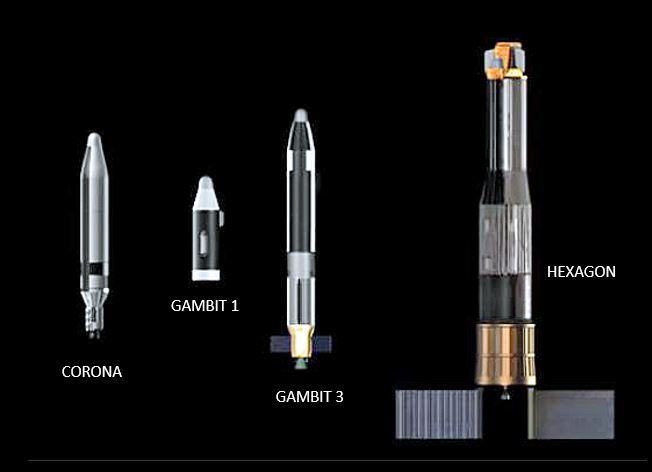
IMAGING SATELLITES (CORONA, GAMBIT & HEXAGON)
The CORONA program paved the way for satellite imagery, followed by GAMBIT for point target imaging and HEXAGON for broad area coverage. Over 8 million square miles of the earth was captured. Click HERE 10 min. (wait for YouTube to load)
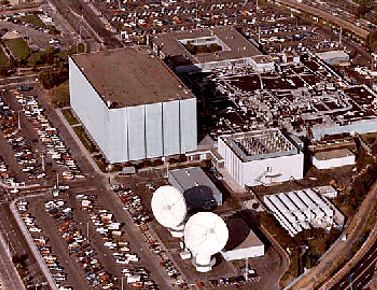
SATELLITE CONTROL FACILITY, SUNNYVALE, CA
These satellites were commanded and controlled via a satellite control network of ground station distributed around the world. The
Satellite Control Facility was the central site that generated the instructions that controlled the function of all satellites. It was comprised of
the Mission Control Complexes, Command Generation, the six Remote Tracking Stations and the recovery vehicle aircraft. It was home to
the iconic “Blue Cube” – a 100 ft tall windowless secure building that housed many classified programs..
Click HERE 21 min (wait for YouTube to load)
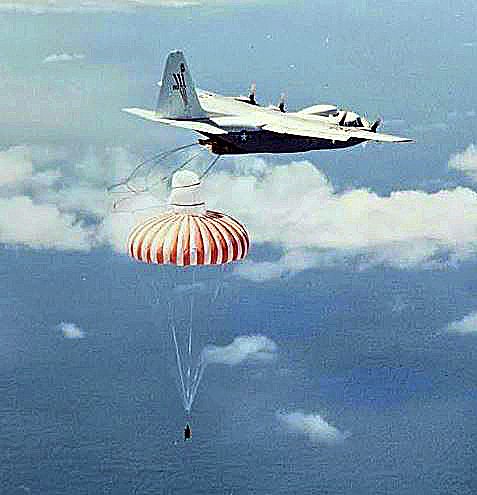
FILM RECOVERY FROM SPACE
The CORONA, GAMBIT & HEXAGON were film-based camera systems for which the exposed film had to be physically returned from space for processing and analysis. This was done via reentry vehicles (RVs) built to withstand the heat of reentry then parachuting in their final decent to be caught mid- air by specially equipped aircraft. Watch footage from the catch of the last HXAGON mission. Click HERE 5 min (wait for YouTube to load)

SIGNALS INTELLIGENCE
This example of an early SIGINT satellite system illustrates both the mission objective and the covert nature of the NRO/SP programs. We were now able to detect Soviet radar and better than our lan-based systems. The first of these eavesdropping satellites was called GRAB. It was the predecessor of more sophisticated satellites put into orbit. Click HERE 7 min (wait for YouTube to load)
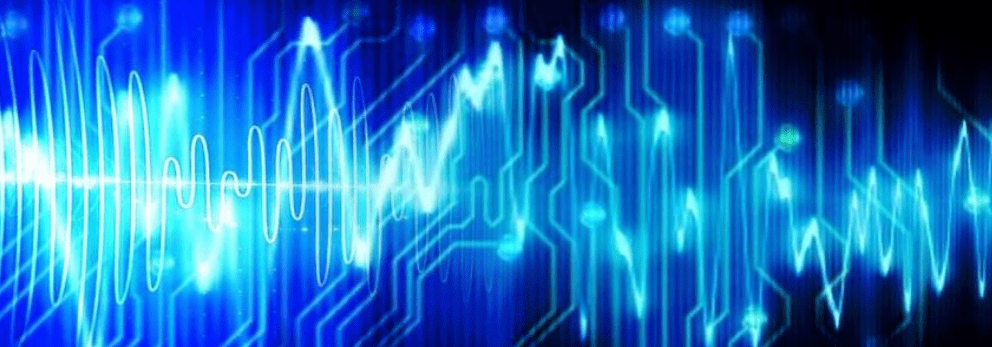
SIGNALS COLLECTION
The mission of SIGINT from space is less familiar to the public. Electronic collection of radar signatures enables our systems to defend against them. Listen to an Air Force Captain describe this important process. Click HERE 3 min (wait for YouTube to load)

THESE SATELLITES AT THE AIR FORCE MUSEUM
The National Museum of the Air Force in Dayton, OH has the test models of the HEXAGON & GAMBIT satellite vehicles on public display. This affords a unique opportunity to witness history kept secret from the public for over 50 years. The CORONA vehicle is shown at the Smithsonian Air & Space Museum. Click HERE 2 min (wait for YouTube to load)


